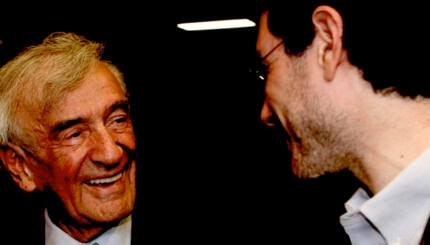“Should we offer the best classes we can, or teach adults to become independent learners of Jewish texts?”
So my memory paraphrases a question asked on JEDADULT, a Facebook group discussing adult Jewish education.
An odd question, to be sure. In the best of all possible worlds, great adult education classes would teach content and skills. All Jewish adult educators would simultaneously share deep insights and empower student learners.
But we do not live in the best of all possible worlds. Most of us learned content through lecture, and demonstrated mastery by writing papers. In other words, through modeling plus drill and practice, we learned to create well-structured, interesting talks. Despite deep praise for chevruta, i.e., learning in pairs or small groups, no one showed us how to proceed.
For three decades, as both student and teacher, I have been chasing this esoteric knowledge. Today, I would like to share some of what I caught — one possible method of teaching text through discussion.
1. Know your text. Read it carefully before you plan your class, three times at least.
2. Choose a scheme for asking questions.
The Great Books Foundation in Chicago offers a great one. Factual questions (only one answer based on the text is possible); interpretive questions (multiple answers based on the text are possible); evaluative questions (multiple answers based on the student’s experience are possible); speculative questions (no answer is offered in this text).
The PaRDeS scheme, articulated by medieval Jewish mystics, is also powerful. Peshat (simple) questions (answers summarize content or narrative); Derash (teaching) questions (answers offer the moral of the story); Remez (hint) questions (answers speculate about the nature of God); Sode (secret) questions (answers describe human spirituality).
2. Play with the text yourself before teaching. Brainstorm questions in each category. Explore the chains of answers, questions, and re-readings they provoke.
3. Assess what background information is absolutely required in order for students to gain meaning from the text. Prepare the shortest possible lecture needed to transmit it. Alternatively, prepare a few information review questions for students to answer at the beginning of the class.
4. Welcome students to class. Let them know, in a general way, your plan or outline for the time. They will be less anxious and unlikely to pull the class away from your preparation.
5. For a long class, or the first in a series of classes, begin by teaching your scheme of questioning. Students will know what you consider a good question — and why you might sometimes say, “Let’s put your question on hold.”
6. Read the texts: shorter ones aloud; longer ones via quiet individual reading.
7. Start discussion with a good question. Working with the two schemes above, almost always the best starting questions will be an interpretive question (e.g., Why is Moses afraid to approach the burning bush?), remez question (e.g., How does God present Godself here?), or sode question (e.g., How does Moses change through his encounter with God?).
8. Consistently encourage students to find an answer from the text. When they offer opinions, ask them, “Where in the text do you see that? Help us see what you see.” Through this close reading, they will sort out the factual or peshat content of the text. And they will raise enough additional questions to keep discussion rich and vibrant, challenging you to decide which questions the group should pursue.
9. Keep in mind the difference between a discussion and an interactive lecture. In interactive lecture, you the teacher choose a path to a particular conclusion. You ask questions to keep people engaged. In discussion, you shape the direction with your questions, but content and conclusions are supplied by the discussants. Faith and keen attention are required.
10. Allow students to address each other directly. (They can still raise their hands to be called on, so that all don’t talk at once.) Not everything has to be answered, restated or commented on by you. This results in a deeper discussion.
11. Restrain yourself temporarily from answering many speculative questions. Though they may provide helpful historical information, they draw you out of the text.
12. As time or energy draw to a close, choose an evaluative question (e.g., Would you have been bolder than Moses?) or derash question (In what way might Moses be a role model for us?) to help personalize the learning.
13. Thank students, and close with the shortest possible summary; sometimes you can ask a student to offer it.
Some aspects of this method may seem counterintuitive, requiring a leap of faith — but I guarantee, it is powerful. Once you gain the confidence integrate elements into your teaching, your classes will be filled with “aha” moments and will never, ever be boring.
Image: Wikimedia Commons



